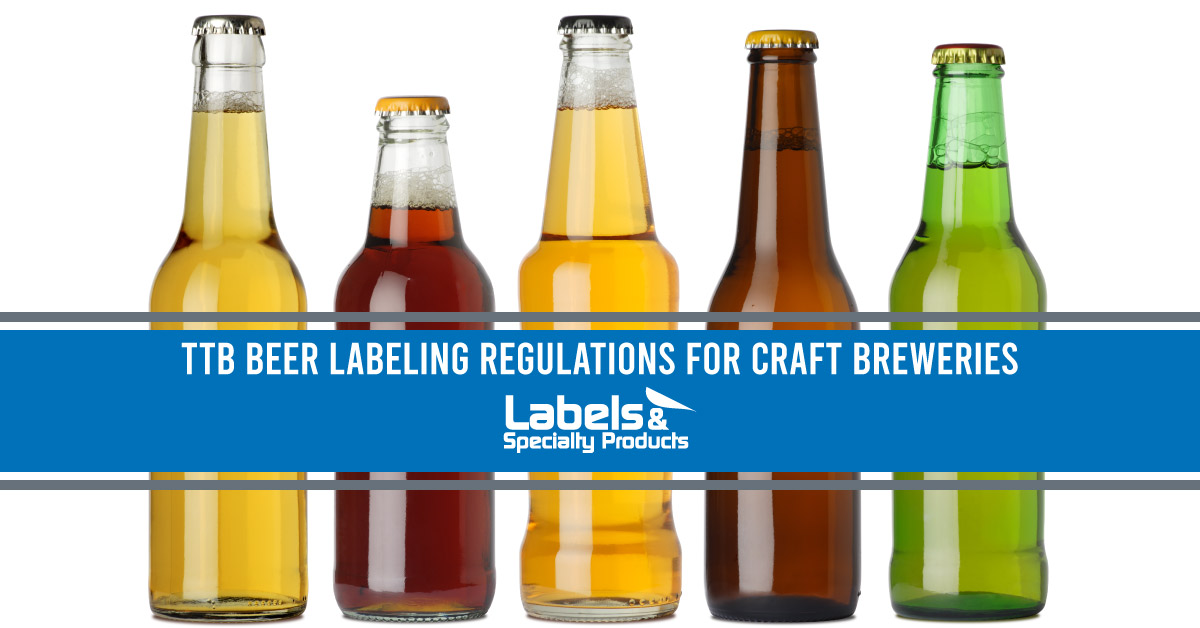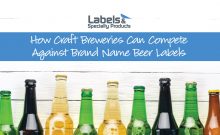Scattered across the country in district offices, the Alcohol and Tobacco Tax and Trade Bureau (TTB), is the federal gatekeeper for approving beer labeling, among other things. Like an overprotective parent, the TTB specifies what you can and can’t put on your beer label — from the verbiage you include, down to type size, element placement, and artwork.
Craft brew packaging can run into some legal issues if you’re not careful. That’s why we’re here to point you in the right direction.
Read, Re-read and Re-Re-Read the TTB Guidelines
The TTB requires that any malt beverage includes the following details on its label:
-
- Brand Name– Brands may not mislead the consumer about the age, identity, origin, or other characteristics of the beverage.
-
- Class Designation– Class refers to the type of beer you’re selling, such as an ale, lager or porter. Click here for a list of malt beverage classes and their descriptions.
-
- Name and Address – List the name and address of the producer/bottler or packer. You can choose between “BREWED AND BOTTLED/PACKED BY,” “BREWED BY” or “BOTTLED/PACKED BY.”
-
- Net Contents – Label the amount of liquid listed on the front of the container. Use American measurements (e.g. pints, fluid ounces, gallons).
-
- Alcohol Content – List to the nearest 0.1 percent unless it’s prohibited by your state. The TTB has an online directory where you can find your state’s alcohol beverage authority.
-
- Disclosures for Specific Ingredients – For now, these disclosures are only necessary if a beer contains any of the following ingredients:
- FD&C Yellow No. 5
- Saccharin
- Sulfite (10 or more parts per million sulfur dioxide)
- Aspartame
- Disclosures for Specific Ingredients – For now, these disclosures are only necessary if a beer contains any of the following ingredients:
-
- Health Warning Statement – For brews with more than 0.5% alcohol, you must include an official government warning that reads:
- GOVERNMENT WARNING: (1) According to the Surgeon General, women should not drink alcoholic beverages during pregnancy because of the risk of birth defects. (2) Consumption of alcoholic beverages impairs your ability to drive a car or operate machinery, and may cause health problems.
- Country of Origin – If you’re having your beer shipped to you from outside the U.S., you’ll have to include the country where the beer was brewed, packed and its type, among other things.
- Health Warning Statement – For brews with more than 0.5% alcohol, you must include an official government warning that reads:
Be Prepared for the Voluntary Disclosure Initiative
While it’s not mandatory yet, there’s a trend towards requiring breweries to include caloric and nutritional info, alcohol content, ingredients and a freshness date on their beer labeling or website. We’ll likely see some best practices emerge over the next few years, but for now, you can get in front of the curve and include it from the start. Learn more here.
Apply for COLA (Certificate of Label Approval)
Once your label has been created according to the TTB’s regulations, then the next step is to fill out your label application forms and submit.
There are two ways to request a COLA:
TTB is allowed up to 90 days to review your labels, and while it doesn’t typically take that long, it’s safe to factor into your launch plan. You can find the current TTB backlog schedule here.
Invest in Quality and Compliant Labels
Don’t let these regulations limit your label design. In the wild market of craft beer, you’ll be up against the creativity and quality of countless other brands. At Labels & Specialty Products, we work with you to print custom craft beer labels that will have your customers admiring your branding almost as much as the drink.
Take time to consult your legal professional in order to fully understand the beer labeling regulations particular to your product, business and state. But after that’s done, contact our experts to talk about how we can deliver high-quality craft beer labels that fit your budget.


